Adobong baka sa gata is one of the many Filipino dishes that comes from the original classic adobo dish. There are many variations of adobo and there are varieties of meat used in cooking this dish. Beef is one of them, and most of the time soy sauce is the main stay listed in the ingredients. But this adobo does not have soy sauce and instead, it uses coconut milk. If you ask me, this is much more related to the ginataang isda (fish with coconut milk) that combines coconut milk and vinegar.
A Unique Twist on a Filipino Classic
At its core, adobo is a savory, tangy dish typically made by simmering meat in vinegar, soy sauce, and a blend of spices. It’s a reflection of the Filipinos’ love for bold, punchy flavors. However, this version of the dish steps away from the traditional soy sauce base and instead takes inspiration from another Filipino favorite—dishes cooked in coconut milk, such as ginataang isda (fish with coconut milk). By using coconut milk, the dish takes on a smoother, creamier flavor profile while still maintaining that essential tanginess from the vinegar.
The Perfect Balance of Creaminess and Tang
One of the things that sets this beef dish apart from the usual adobo varieties is its balance of flavors. The coconut milk lends a creamy texture and subtle sweetness that beautifully complements the vinegar’s acidity. Rather than being overpowering, the coconut milk mellows the dish, making it smooth and almost comforting. Add to that the heat from finger chili peppers, and you have a complex dish that marries richness with just the right amount of spice.
Unlike traditional beef adobo, which uses soy sauce to impart its deep savory flavor, this version relies entirely on the natural richness of the coconut milk and the beef itself. The absence of soy sauce makes the dish lighter in color and softer on the palate. It’s an excellent choice for those who enjoy creamy, rich dishes but still crave that signature tang found in Filipino cuisine.
Cooking the Dish
Making this delicious meal is straightforward, which is perfect for beginner cooks. Start by sautéing onions and garlic in a deep pan until they’re aromatic. The garlic and onions lay the foundation for the dish’s flavor. Once they’re softened and fragrant, add in the beef and cook until it changes color. This helps the meat absorb the flavors better during the simmering process.
The key to achieving the perfect texture is in the slow simmering. Once you’ve added vinegar, salt, and pepper to the pan, it’s important not to stir. Let the mixture cook until the liquid is reduced by half, ensuring the vinegar’s sharpness cooks off, leaving behind a tangy base for the beef. Then, add water and continue to cook until the meat is tender.
As the beef becomes soft and succulent, it’s time to introduce the coconut milk. This is when the dish truly comes together. The coconut milk adds creaminess and richness, but it doesn’t overpower the other flavors. Let it simmer for about 10 minutes on low heat. Just before serving, stir in a bit of coconut cream for an extra layer of richness and allow the sauce to thicken slightly.
Coconut Milk in Filipino Cooking
Coconut milk, or gata, is a common ingredient in Filipino cooking, especially in regions where coconut trees thrive. It’s used in both savory dishes like laing (taro leaves cooked in coconut milk) and sweet desserts like ginataang bilo-bilo (sticky rice balls in coconut milk). The use of coconut milk not only adds a creamy texture but also lends a subtle sweetness that complements a wide range of flavors.
In this beef dish, the coconut milk brings a whole new level of richness, making it heartier and more luxurious than the standard soy sauce-based adobo. But don’t let the creaminess fool you into thinking it’s overly heavy—the vinegar keeps things balanced by cutting through the richness with its sharp, tangy flavor.
A Dish for All Occasions
This coconut-infused version of adobo is perfect for any occasion. Whether you’re serving it at a family gathering or enjoying it on a quiet weeknight, it’s sure to satisfy your cravings for comfort food. What makes it especially great is its versatility—pair it with freshly steamed rice, and you have a meal that’s both filling and satisfying.
For those new to Filipino cooking, this dish offers a wonderful introduction to the country’s love of combining savory and creamy flavors. It’s also an excellent gateway to learning more about how versatile adobo can be. With the right balance of creamy coconut milk and tangy vinegar, this dish is sure to win a spot on your regular dinner rotation.
Food for Thought: The Origins of Adobo
Adobo is often considered the unofficial national dish of the Philippines, though its roots trace back to the early days of Spanish colonization. The word “adobo” itself comes from the Spanish word for marinade or seasoning, but the method of preserving food in vinegar predates this era. Filipinos were already using vinegar and salt to preserve food long before the Spanish arrived. Over time, the technique evolved, and additional ingredients like soy sauce, garlic, and bay leaves became staples in the dish.
Though adobo has Spanish influences, it remains distinctly Filipino, with each region in the country boasting its unique take on the dish. Some use chicken, others pork, and some, like in this recipe, prefer beef. The addition of coconut milk showcases the country’s resourcefulness and creativity, as Filipinos often adapt dishes based on available local ingredients.
In summary, this beef adobo with coconut milk offers a delightful twist on a traditional favorite, blending creamy and tangy flavors in perfect harmony. Whether you’re a beginner or a seasoned cook, this dish is sure to impress and satisfy.
How to Cook Beef Adobo in Coconut Milk (Adobong Baka sa Gata)
Ingredients
- 1/2 kilo beef cut into cubes
- 2 Tbsp cooking oil
- 1 large onion chopped
- 1 tsp garlic minced
- 1/2 cup cane vinegar
- 1 cup water
- 1 cup coconut milk
- 1 cup coconut cream
- 2 pcs finger chili pepper halved
- Salt and pepper to taste
Instructions
How to cook Beef Adobo in Coconut Milk:
- Heat the oil in a deep pan. Sauté onions and garlic. Add beef and saute until color changes.
- Add vinegar, salt, pepper and do not stir. Cook over moderate heat until liquid is reduced to half.
- Add water and cook covered until beef is tender.
- Add coconut milk and finger chili pepper and allow to simmer for 10 minutes over low heat.
- Pour in coconut cream and allow to simmer for another 5 minutes over low heat.
- Adjust seasoning if necessary.
Notes
Cooking Tips:
Enhance Flavor with Marinade
For a deeper flavor, marinate the beef in soy sauce, vinegar, garlic, and pepper for at least an hour before cooking. This helps the meat absorb the spices and become more tender. Don't skip this step for a truly delicious adobo.Use Full-Fat Coconut Milk
Opt for full-fat coconut milk to achieve a richer and creamier sauce. The extra fat adds a luxurious texture and enhances the dish’s flavor profile. Low-fat versions may not provide the same depth and richness.Simmer Slowly for Tender Meat
Cook the beef slowly on low heat to ensure it becomes tender and absorbs the flavors of the sauce. Rapid boiling can toughen the meat and make it less enjoyable. Patience pays off with a melt-in-your-mouth result.
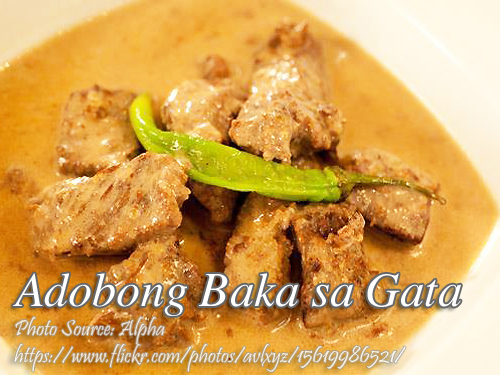

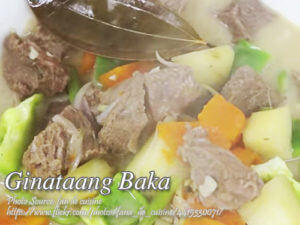
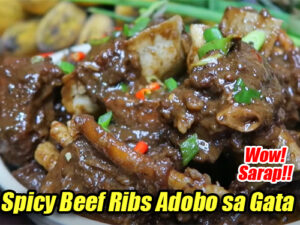
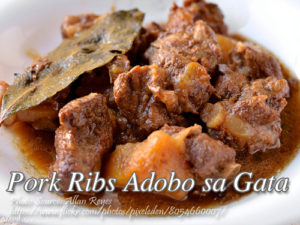
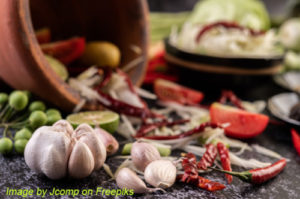
How much coconut cream? It is not in the ingredients. Thanks!
Hi Mark, thanks for your feedback. I’ve corrected recipe already. Check it again.
sarap
Recipes are easy to follow. Like na like ko ang Panlasang Pinoy. Thanks for sharing.
The Best Panlasang Pinoy Recipe. I like it very much. Thanks & God Bless.